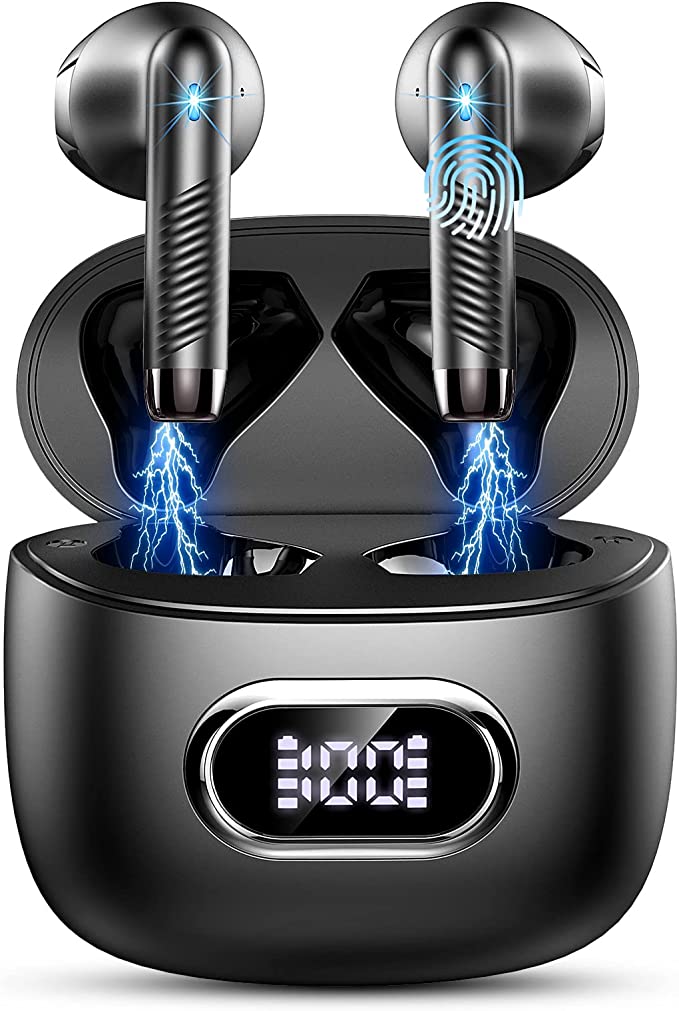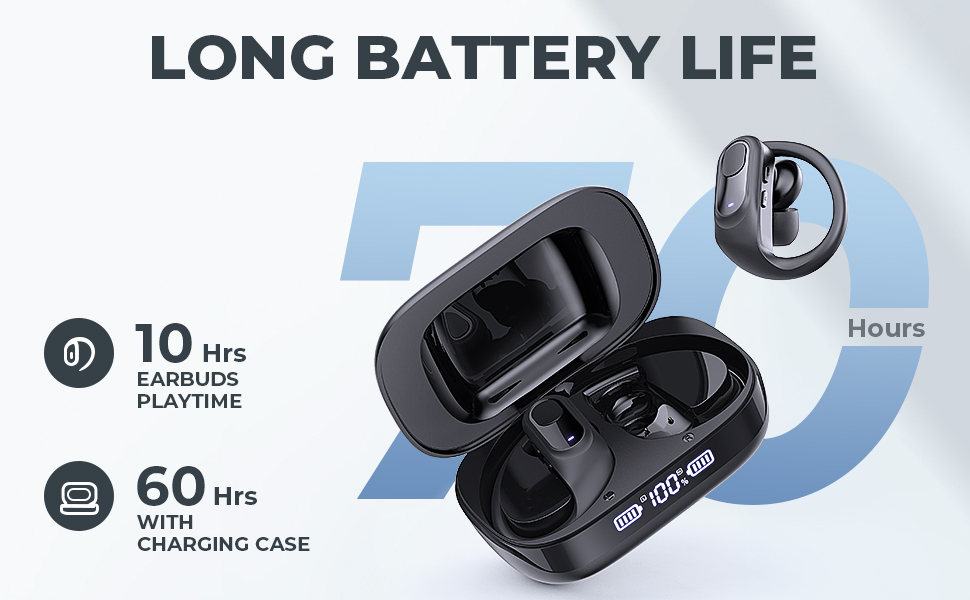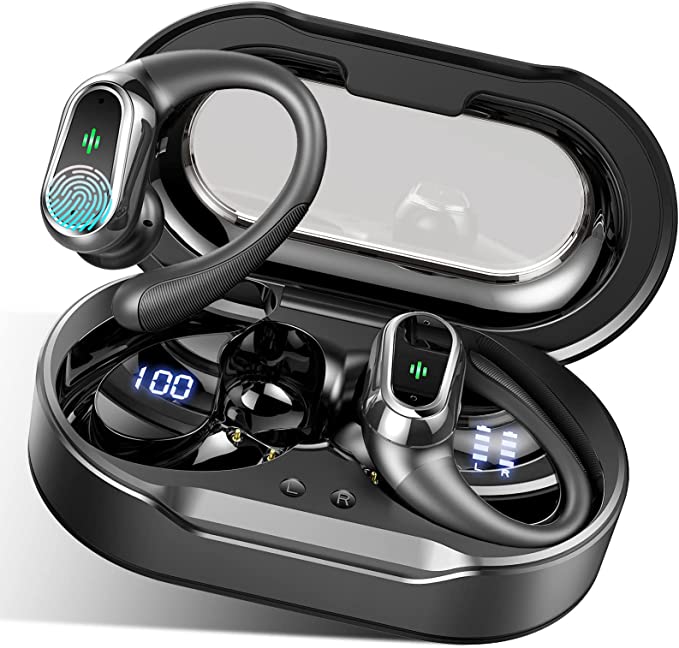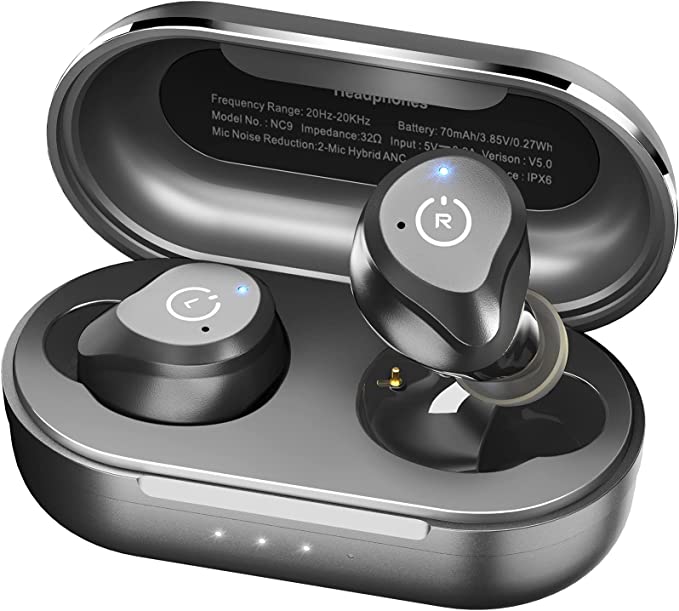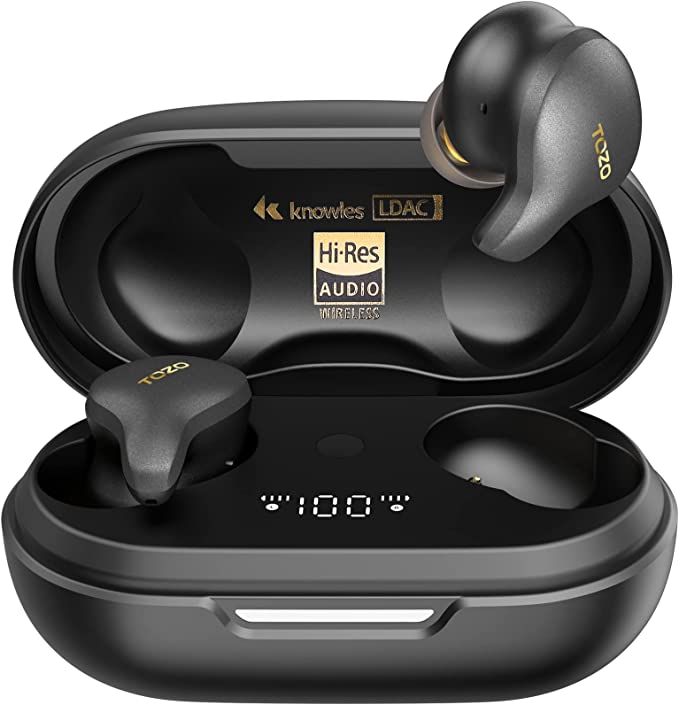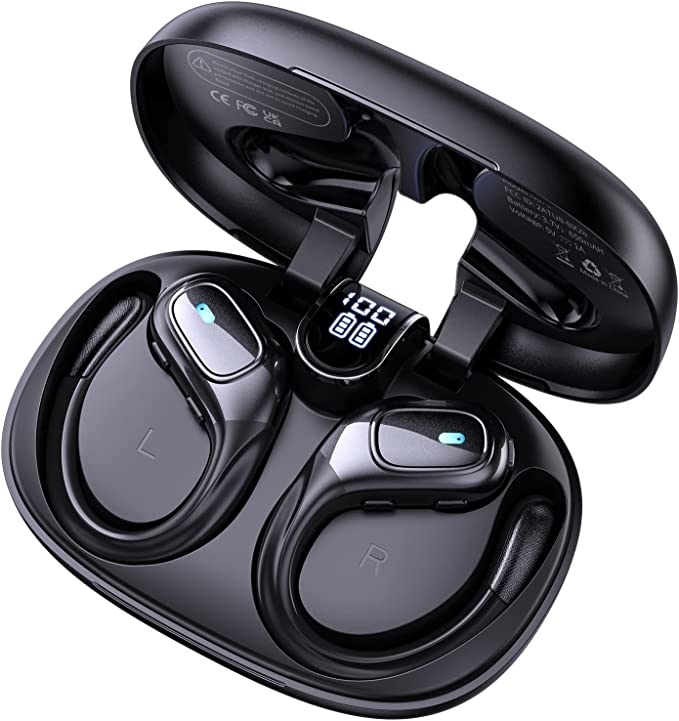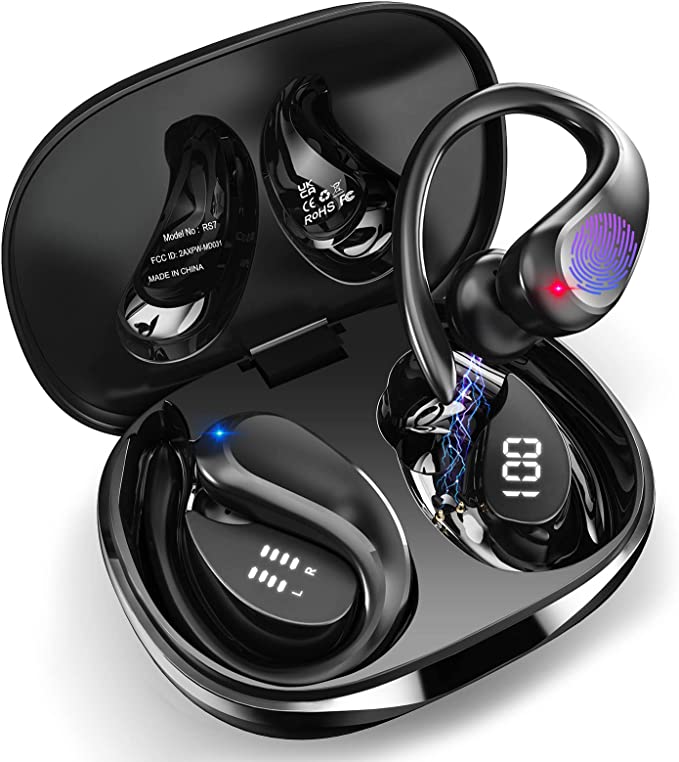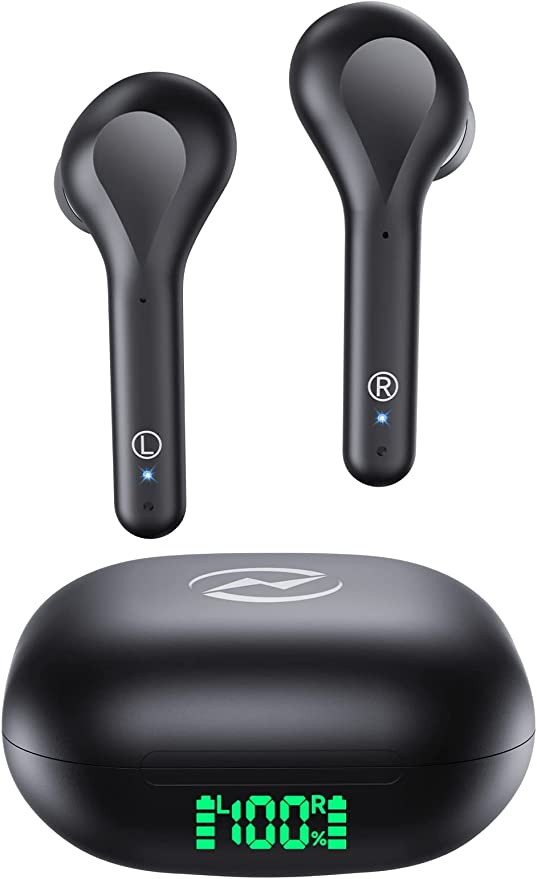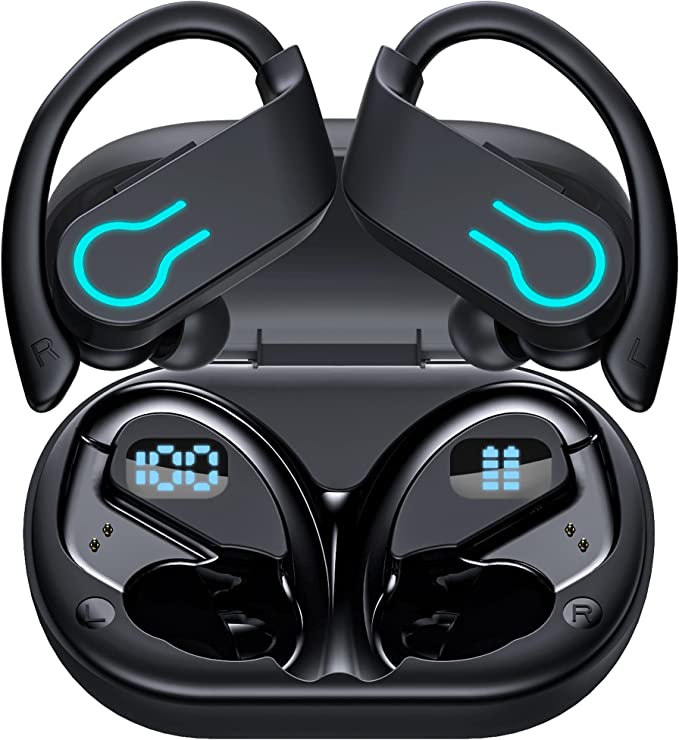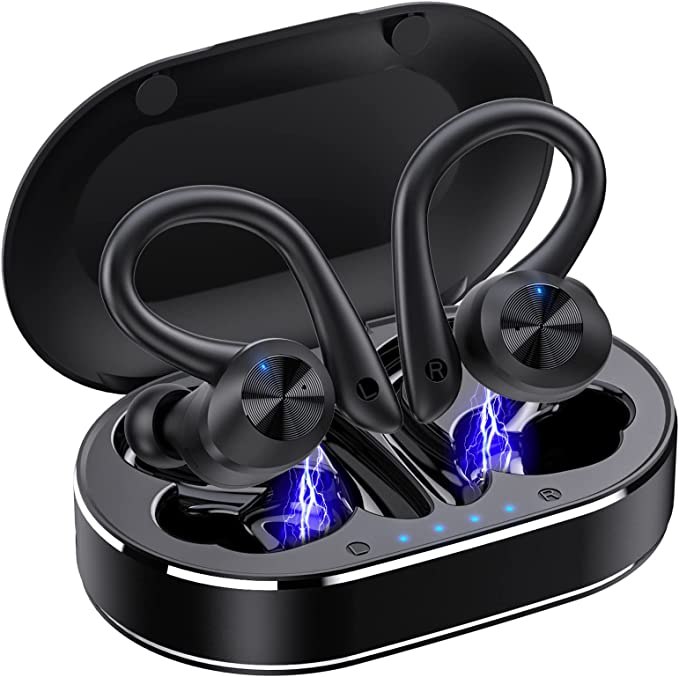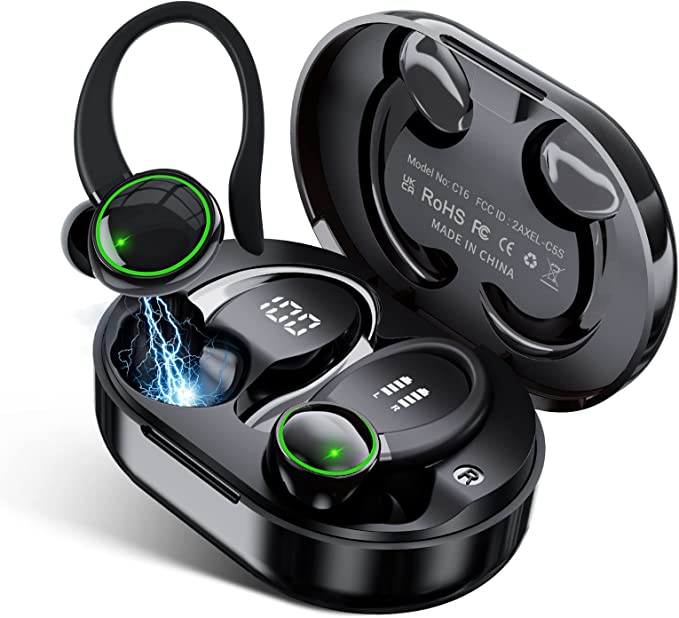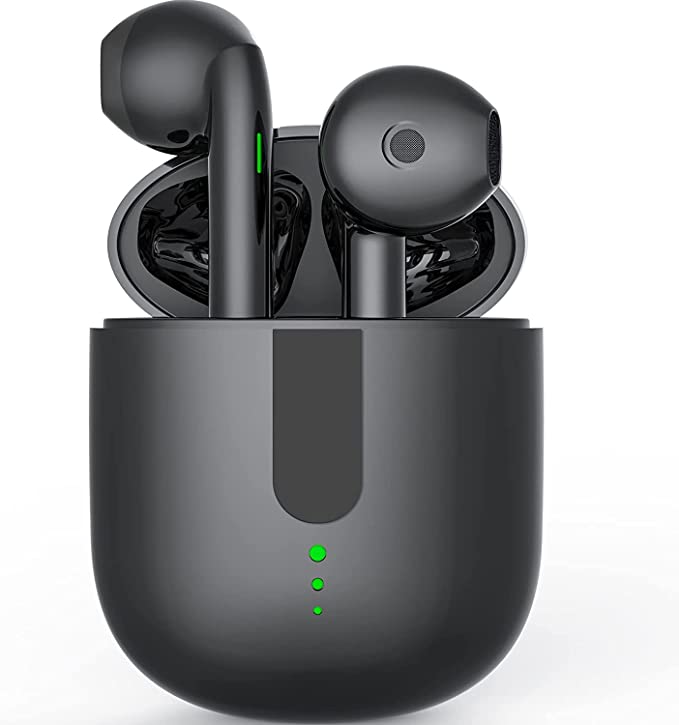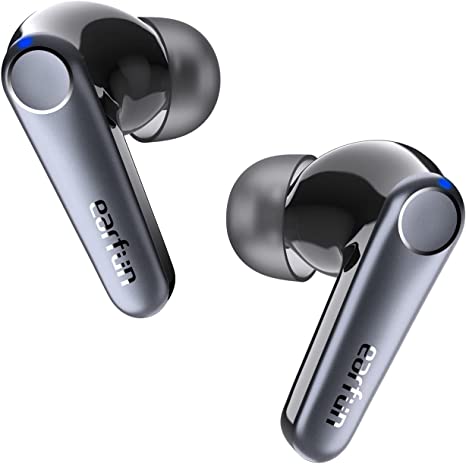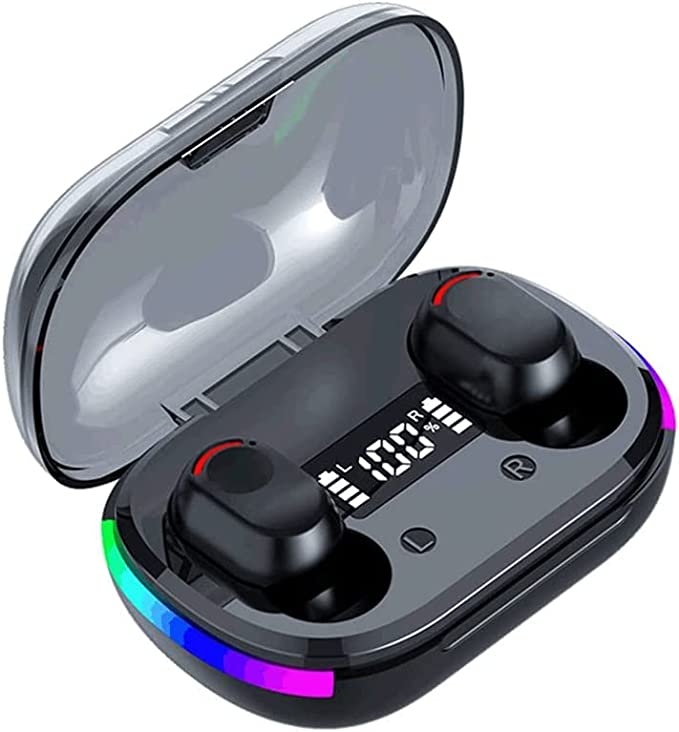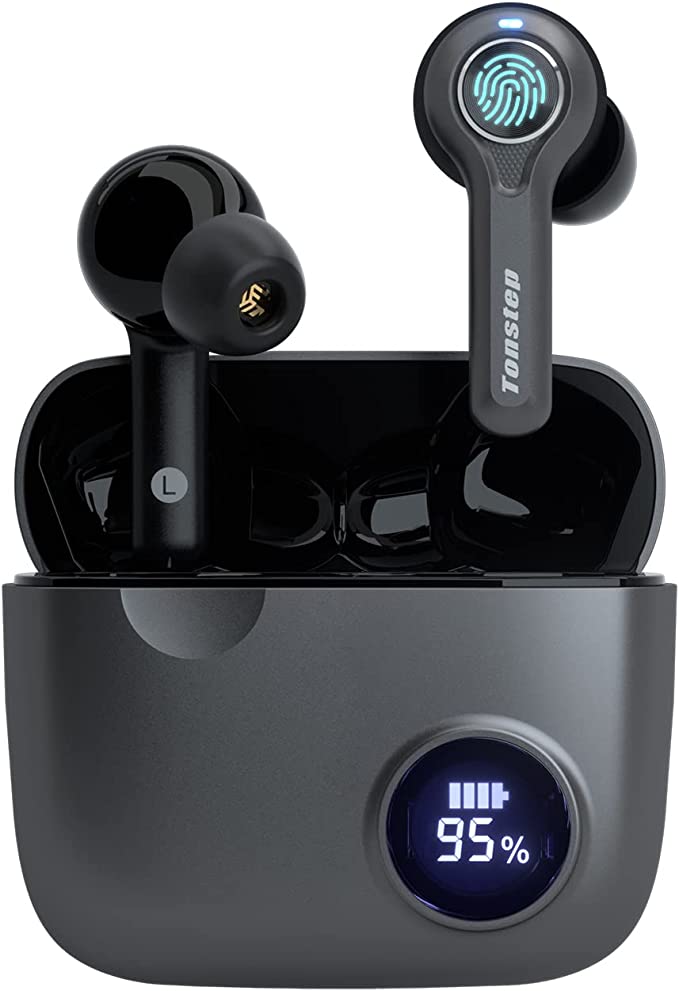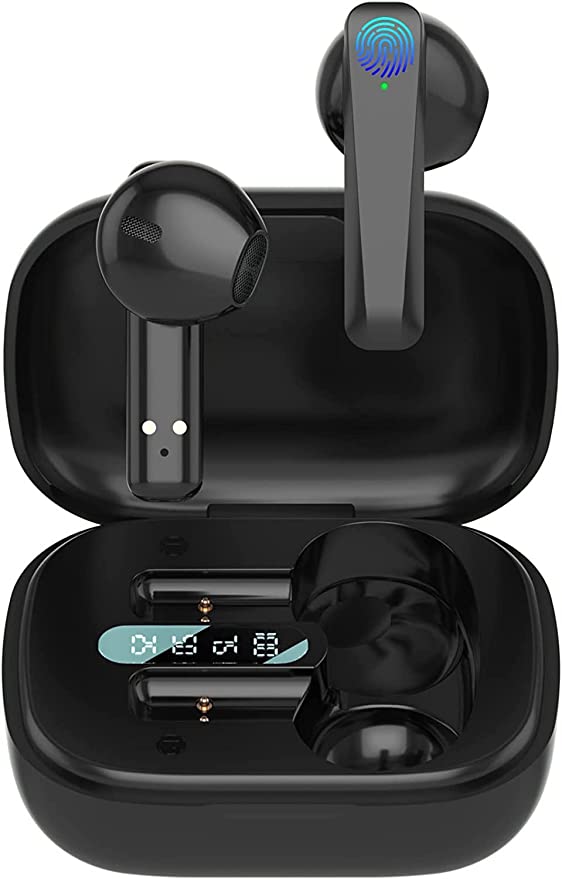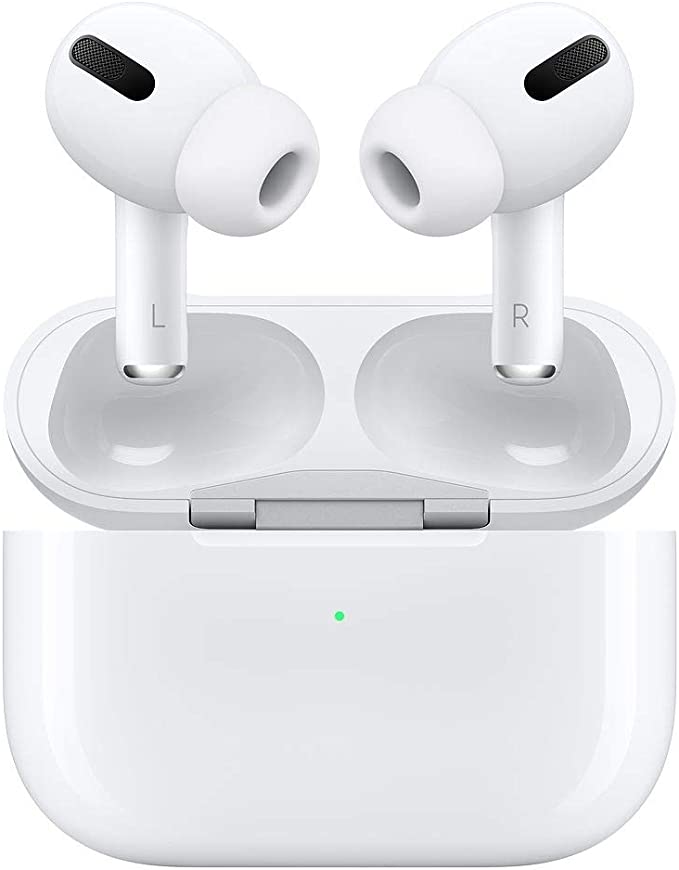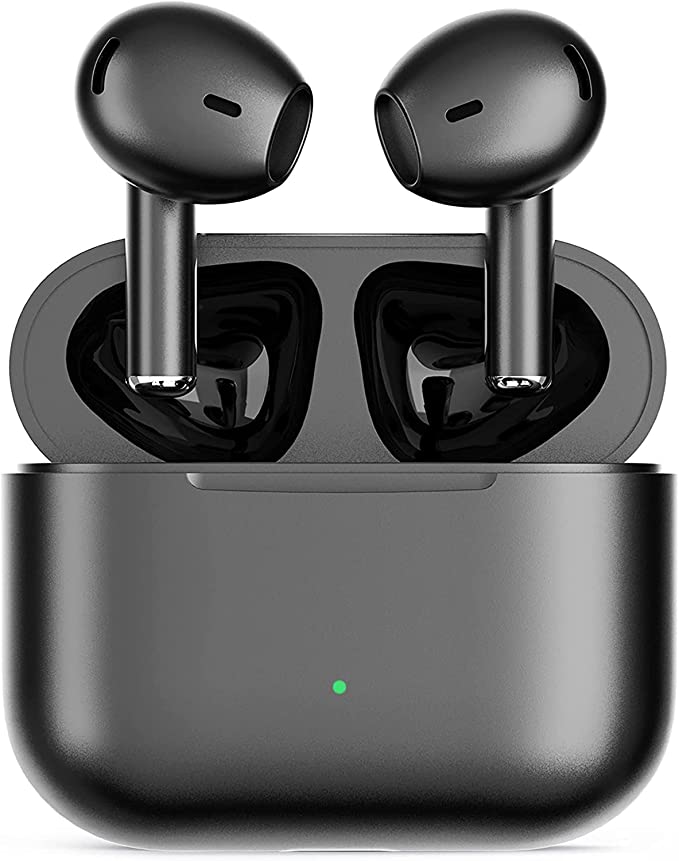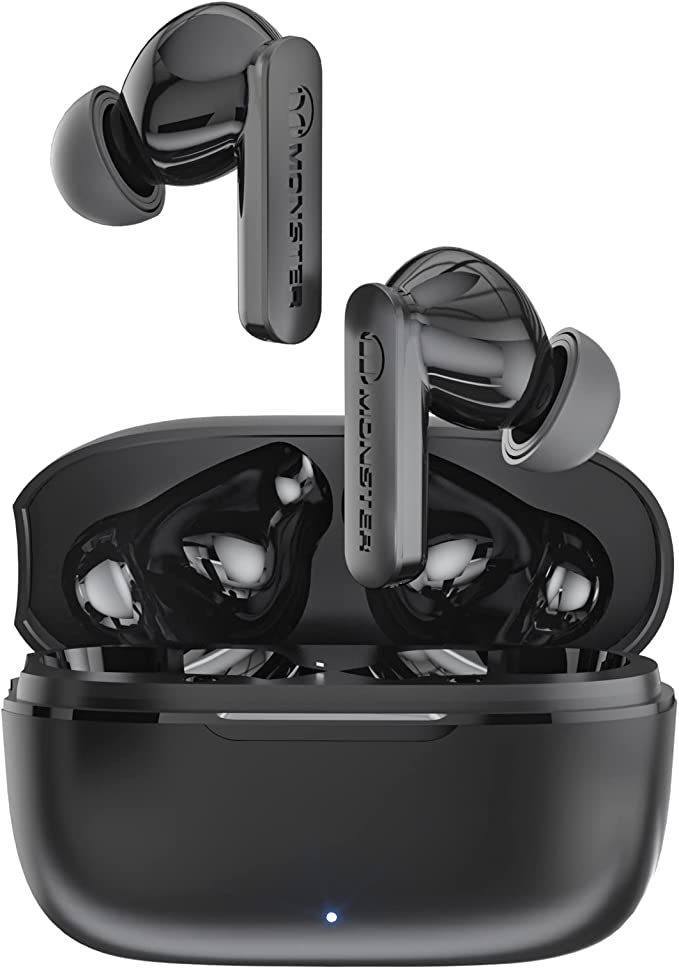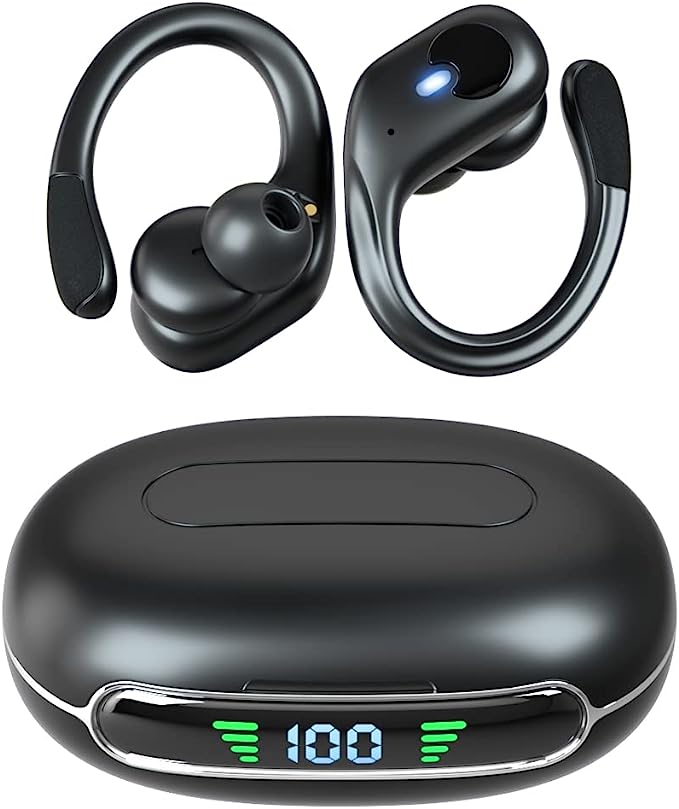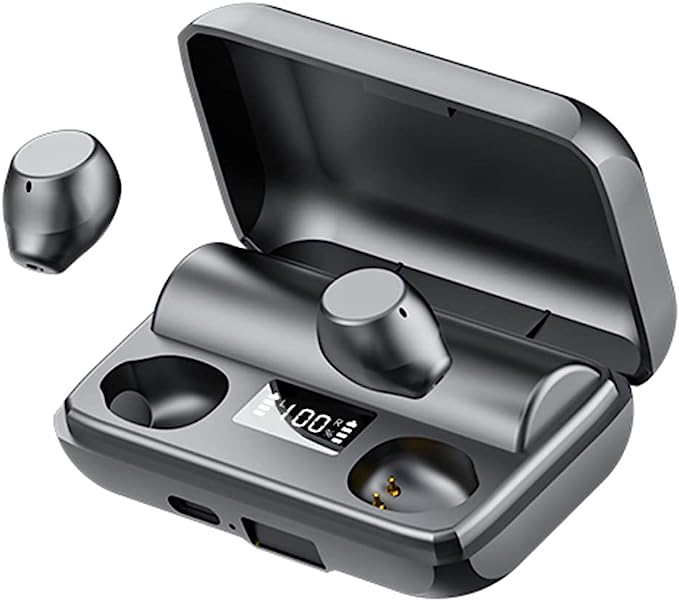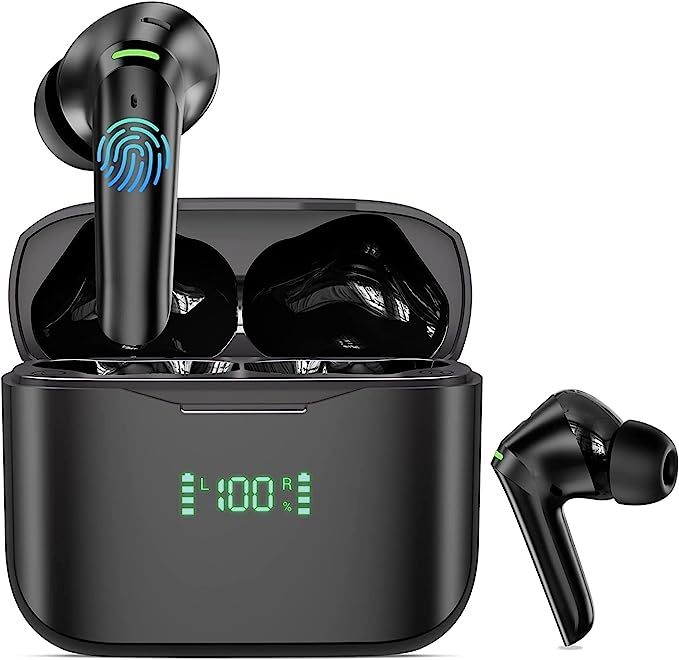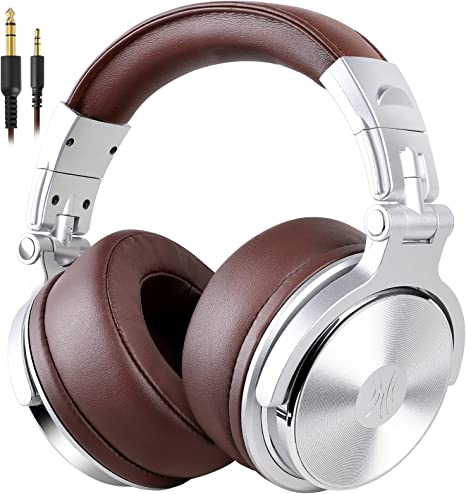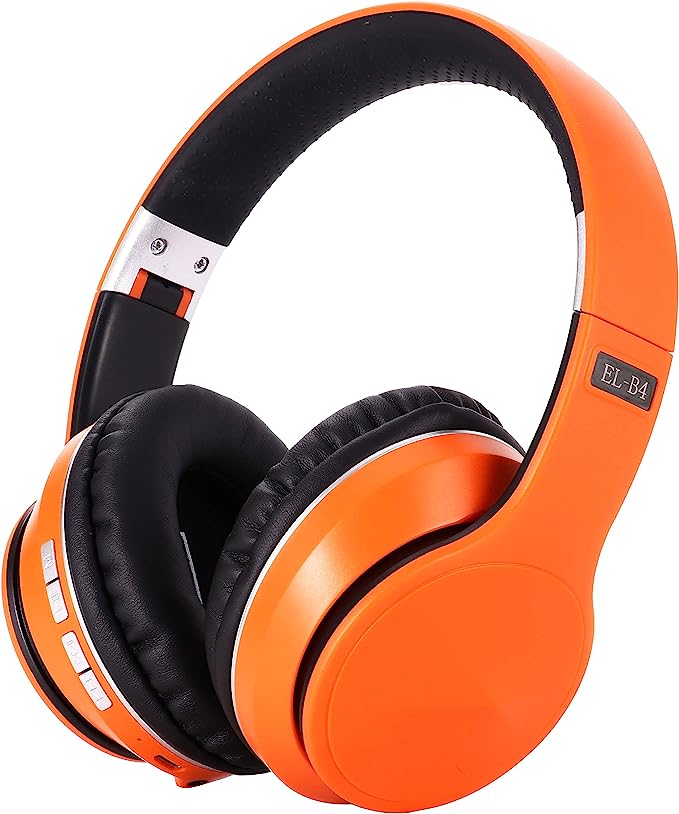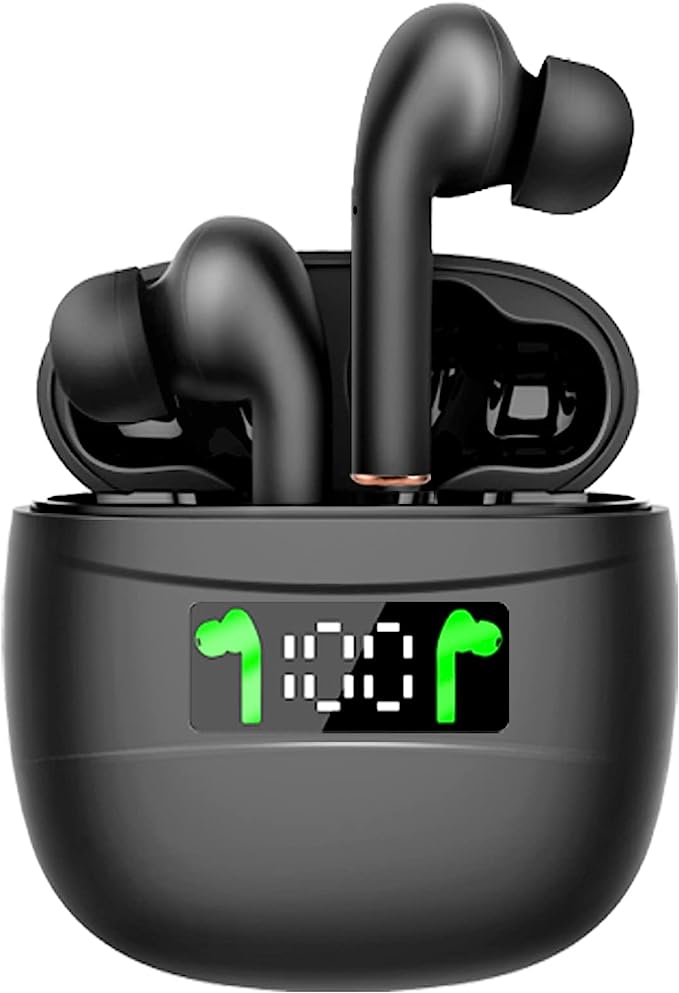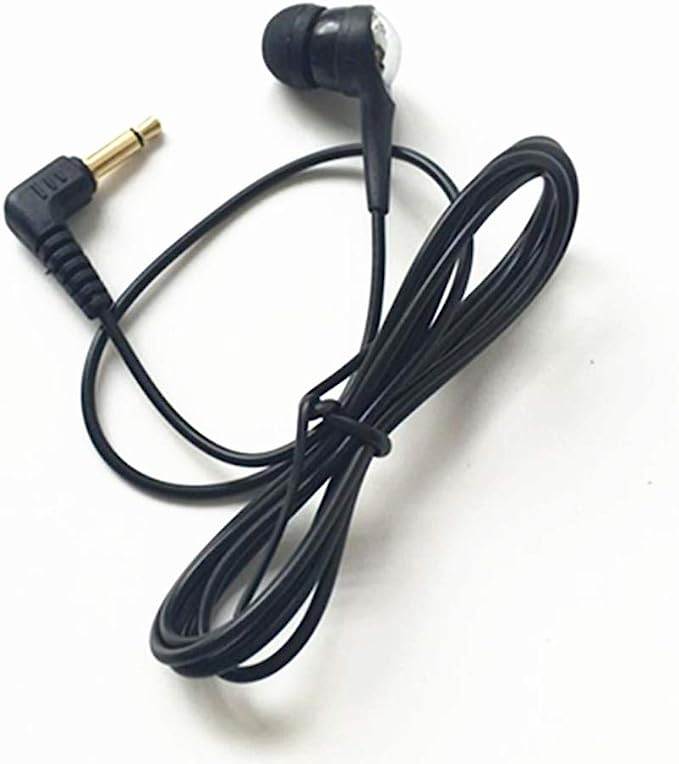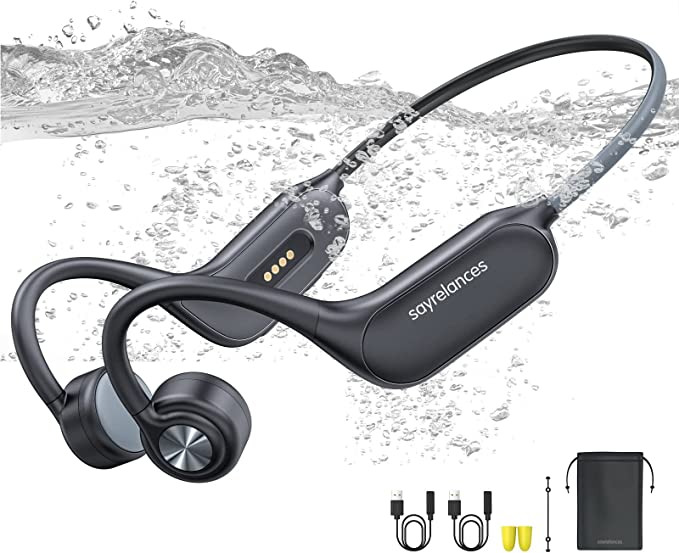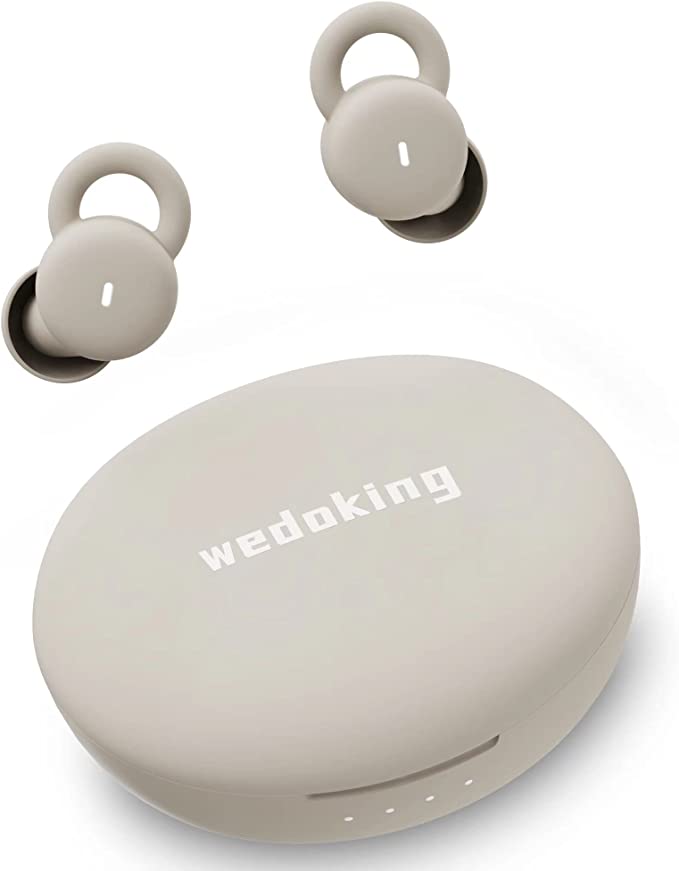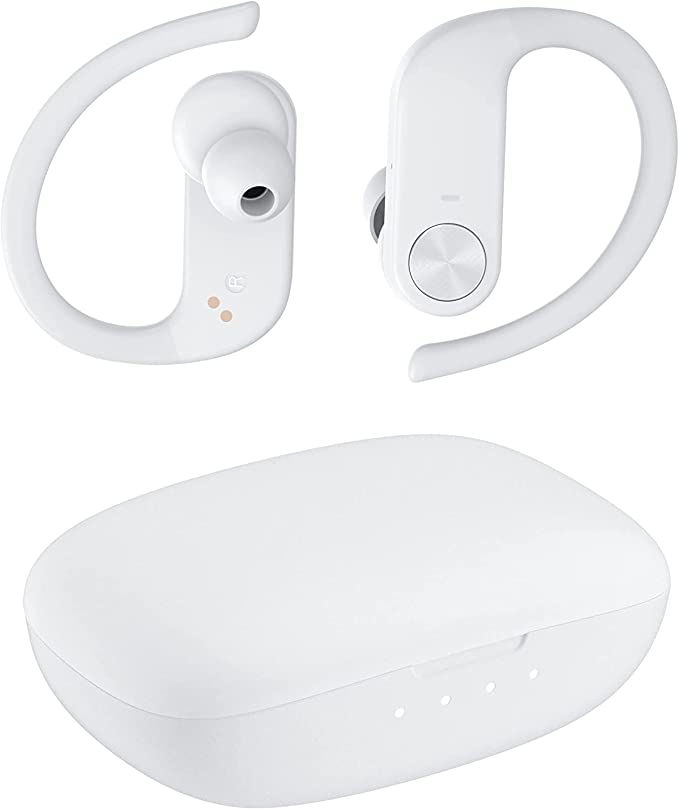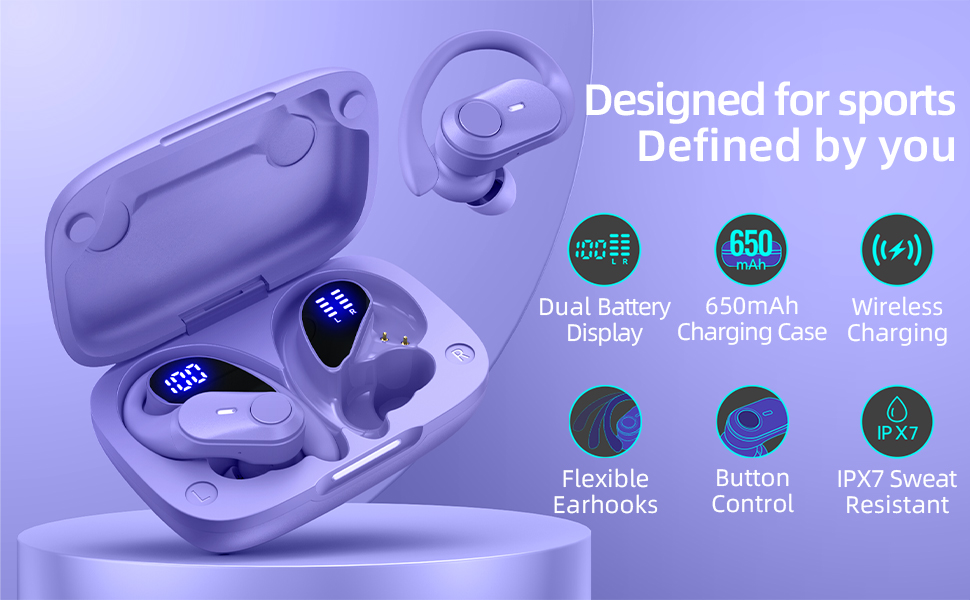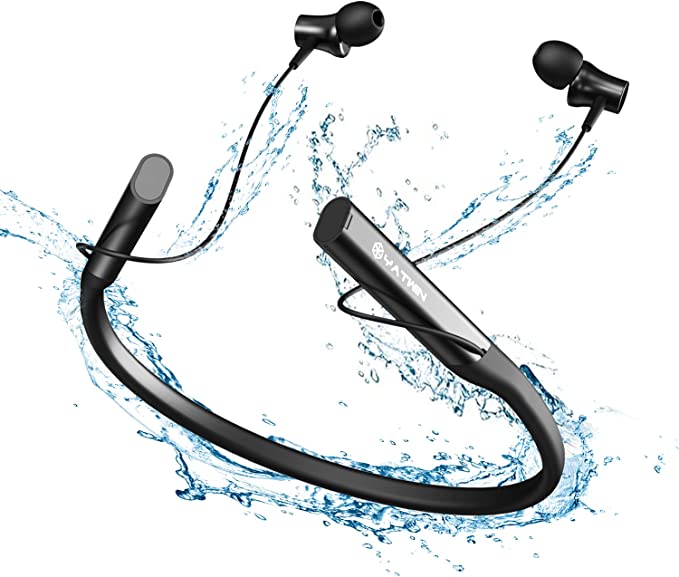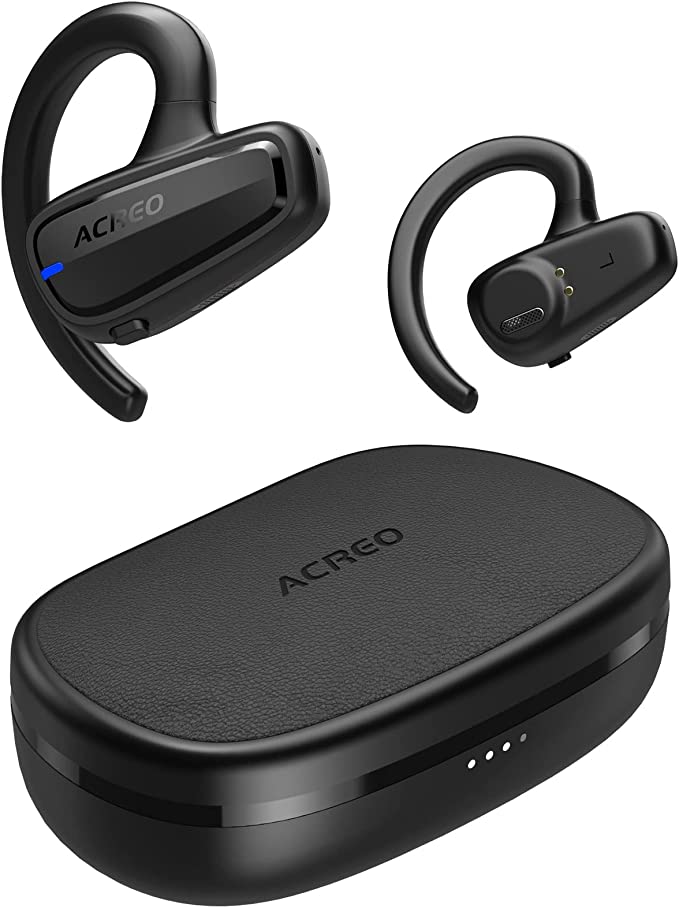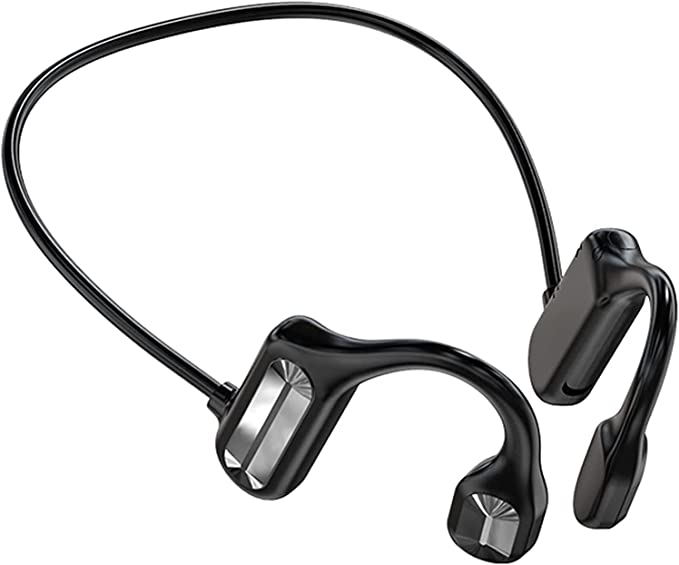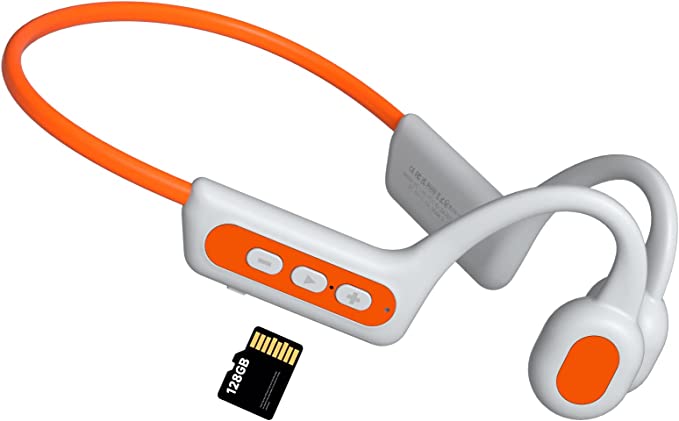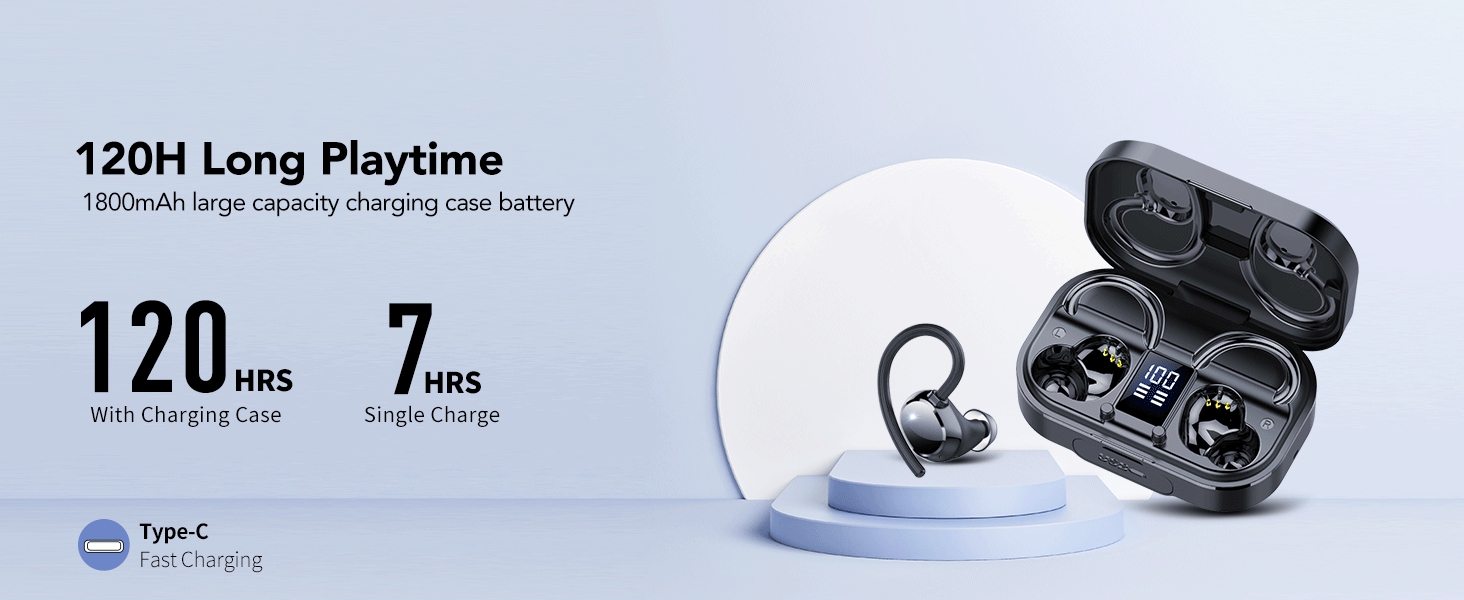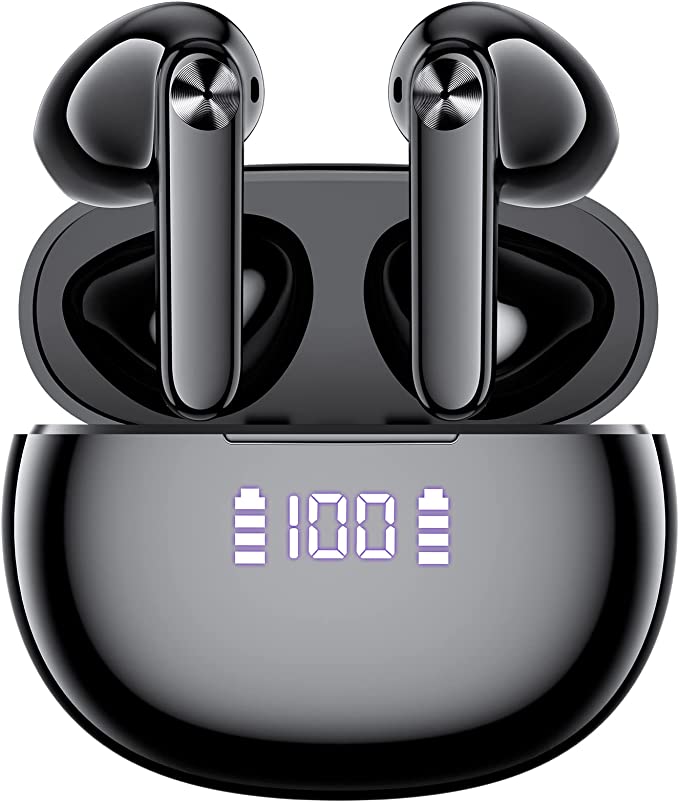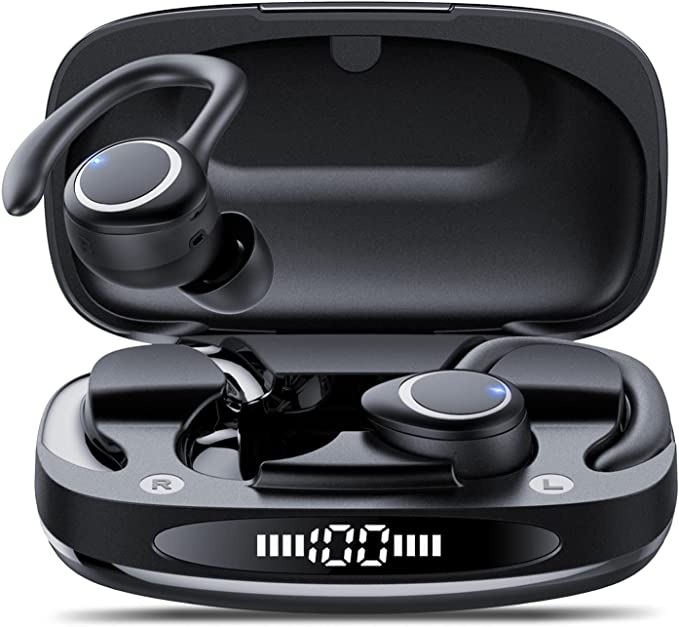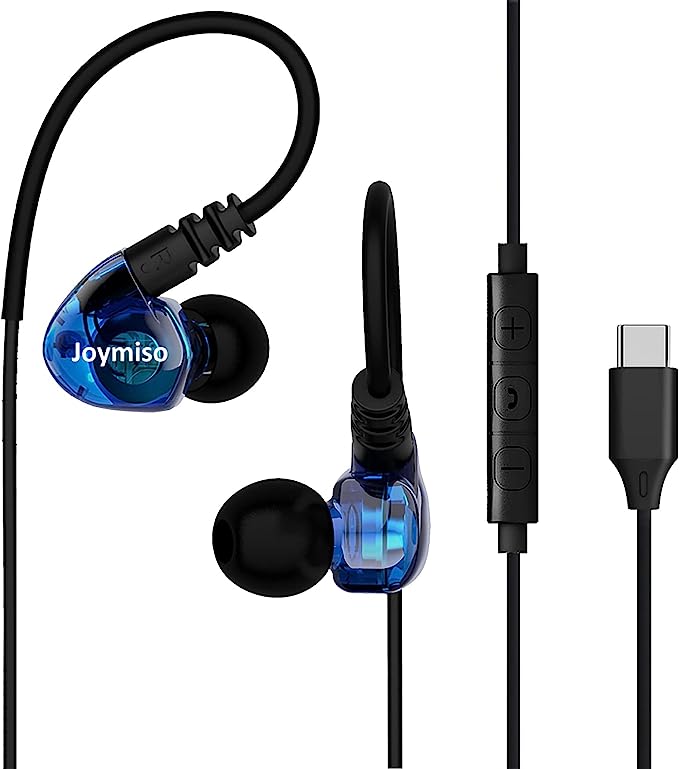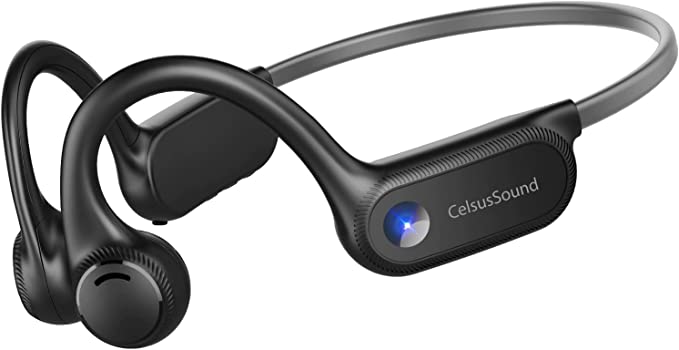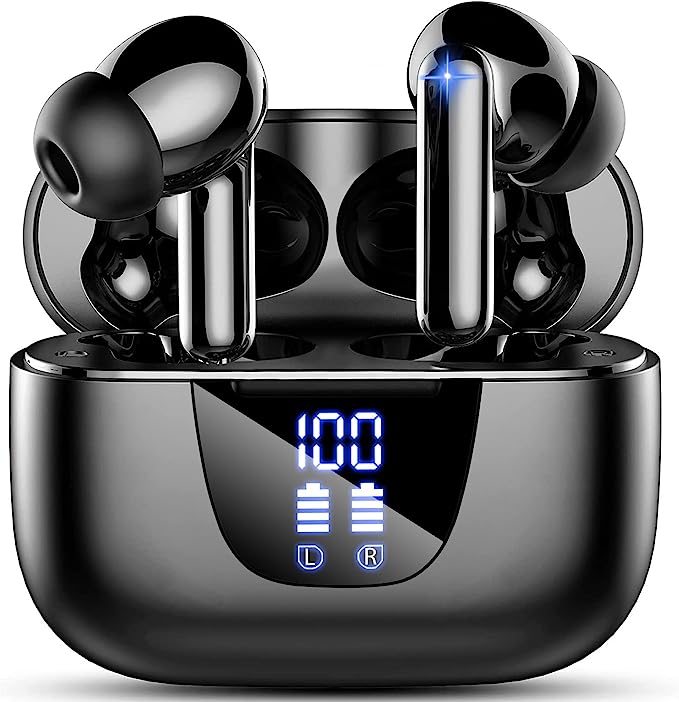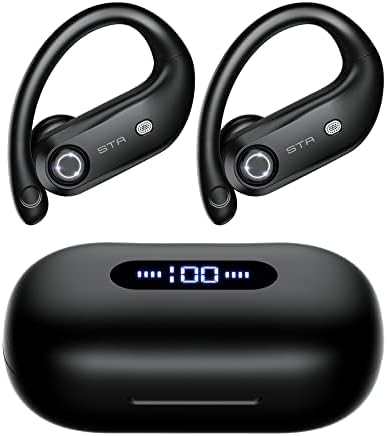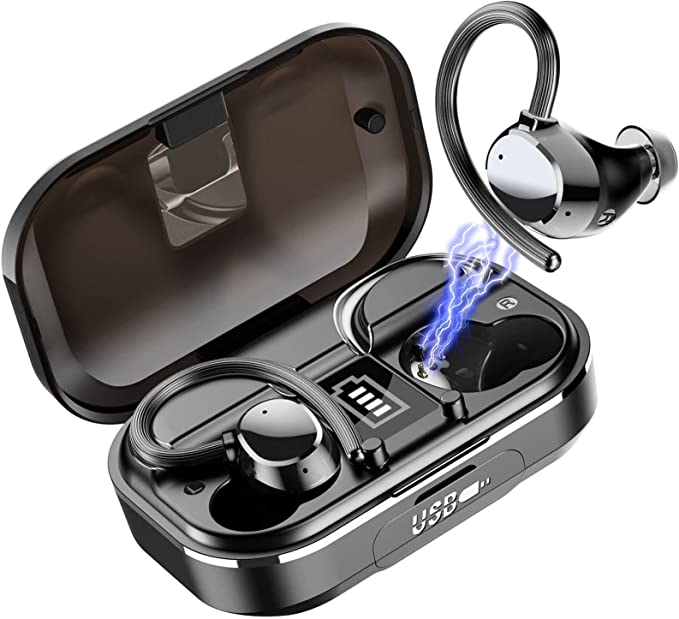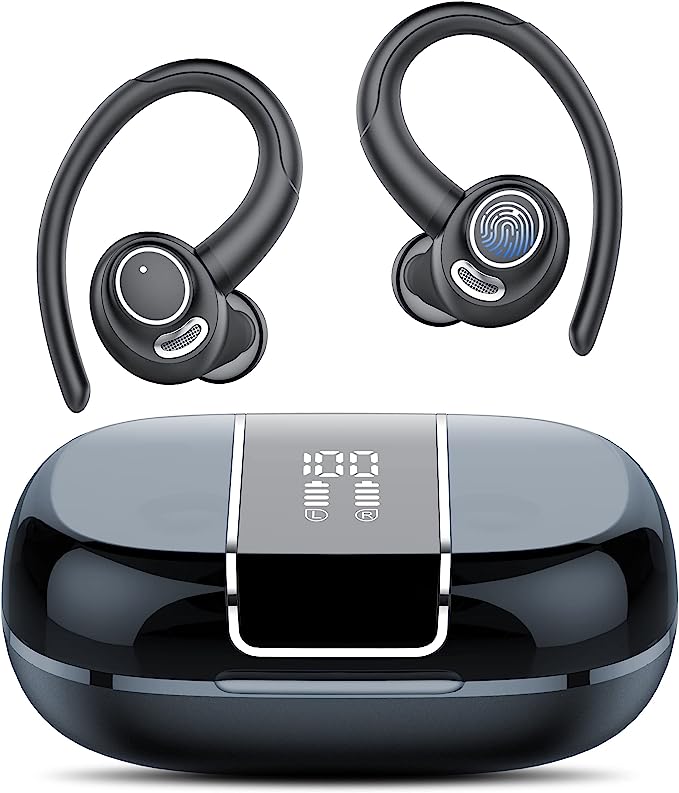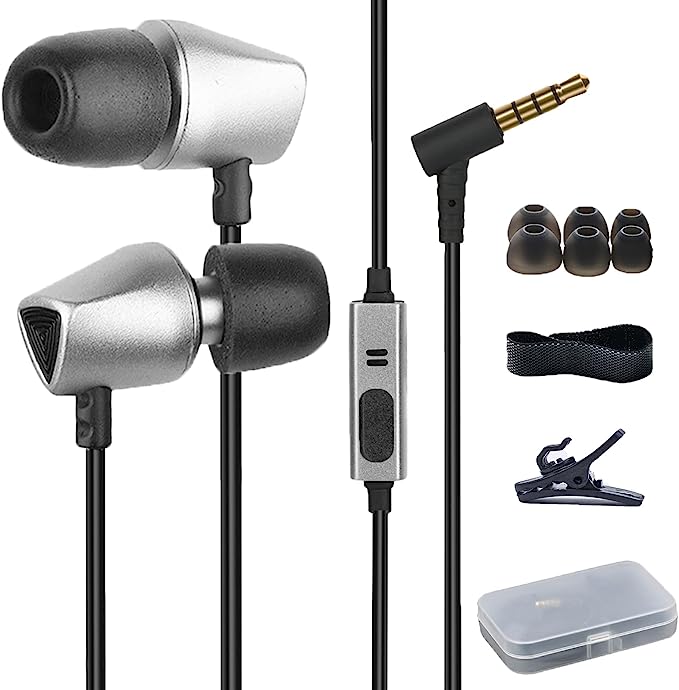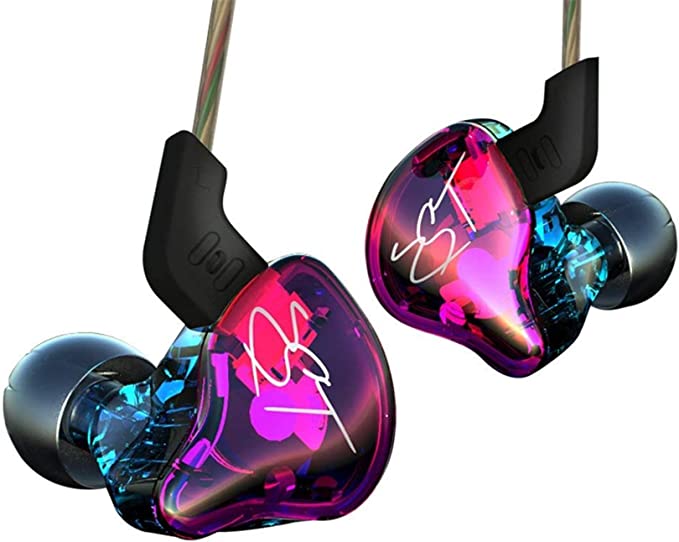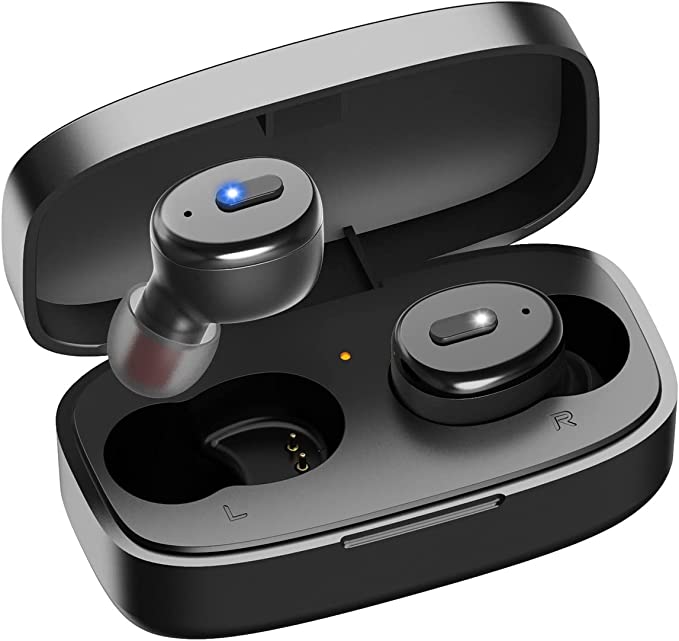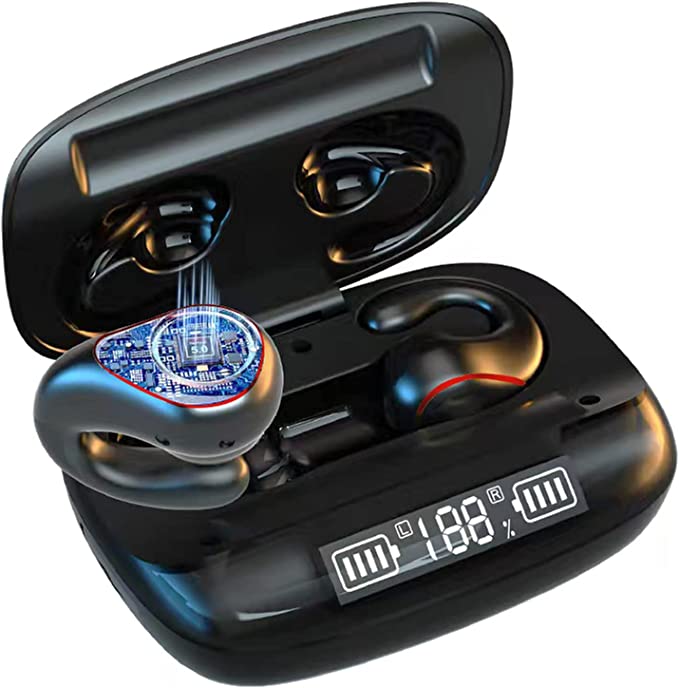Drsaec J52 Wireless Earbuds: A True Wireless Wonder for Audio Bliss on the Move
Update on May 30, 2025, 5:17 a.m.
In an era where our lives are increasingly untethered, the humble earbud has transformed from a simple audio accessory into an indispensable personal companion. It’s our portal to music that moves us, podcasts that enlighten, and connections that matter. But have you ever paused to consider the intricate dance of science and engineering packed into these tiny devices? The journey of sound, from a digital file to an immersive experience in your ears, is a marvel of modern technology. We’ll explore this journey, using the features commonly found in contemporary wireless earbuds, such as the Drsaec J52, as our guide to understanding the magic behind the music.

The Wireless Handshake: Understanding Bluetooth 5.3’s Leap Forward
The very essence of “wireless” earbuds lies in their ability to communicate without physical tethers, and the cornerstone of this communication is Bluetooth technology. Think of Bluetooth as a sophisticated, invisible language spoken between your audio source (like a smartphone) and your earbuds. The Drsaec J52, for instance, highlights its use of Bluetooth 5.3, a significant iteration in this wireless standard.
But what does “5.3” truly mean for your daily listening? To appreciate its advancements, let’s consider the evolution. Early Bluetooth versions, while revolutionary for their time, sometimes struggled with stability, like a radio signal prone to static in a busy area. They could also be power-hungry, draining batteries faster than we’d like. Bluetooth 5.3, as a more recent standard, addresses these historical pain points head-on. It’s akin to upgrading a winding country lane to a multi-lane, intelligently managed expressway for data.
One of the key enhancements in Bluetooth 5.3 is its improved connection stability and efficiency. It achieves this through more sophisticated channel selection algorithms and the ability to quickly switch between frequencies to avoid interference. This means fewer frustrating dropouts when you’re on a call or lost in a song. The product description for the J52 mentions “twin bluetooth 5.3 technology” and “binaural synchronous transmission,” suggesting an architecture where data can be sent to both earbuds independently and simultaneously, rather than one earbud relaying to the other. This not only bolsters stability but can also reduce latency – that slight, sometimes perceptible delay between what you see on a screen and what you hear, which is crucial for watching videos or gaming.
Furthermore, Bluetooth 5.3 is engineered for lower energy consumption (often referred to as BLE or Bluetooth Low Energy principles). This is a critical factor for small, battery-operated devices like earbuds. More efficient data transmission and idle modes mean that the earbuds themselves, and your phone, can conserve power, leading to those impressive multi-hour playtimes often advertised – the J52, for example, claims a significant “42H” total playtime when combined with its charging case. Fast pairing, another benefit, means the “handshake” between your device and earbuds happens almost instantaneously, getting you to your audio content quicker. The Bluetooth Special Interest Group (SIG), the organization that oversees the development of Bluetooth standards, continually refines these aspects to enhance user experience across billions of devices worldwide.

The Genesis of Sound: Deconstructing the 13mm Graphene Driver
Once the wireless signal reaches the earbuds, the next crucial step is converting that digital information back into audible sound waves. This monumental task falls to the driver, the heart and soul of any earbud or headphone. The Drsaec J52 product information specifies a “13mm graphene composite driver.” Let’s unpack what this means for the sound that graces your ears.
A driver is essentially a miniature loudspeaker. In a typical dynamic driver, like the one suggested here, an electrical current (carrying the audio signal) passes through a voice coil attached to a diaphragm (a thin, cone-like membrane). This creates a fluctuating magnetic field, causing the coil and diaphragm to vibrate rapidly. These vibrations displace air, creating pressure waves that our eardrums perceive as sound.
The “13mm” refers to the diameter of this diaphragm. Generally, a larger diaphragm has the potential to move more air. This can be particularly beneficial for reproducing lower frequencies, or bass, giving music a sense of fullness and impact – often described as “Deep Bass” or, as the J52 material notes, “well-defined bass (60%+).” A larger driver can also contribute to a more open and spacious sound, often referred to as a wider soundstage, making the music feel less confined to the inside of your head and more like a live performance.
The material of the diaphragm is equally critical, and the mention of a “graphene composite” is noteworthy. Graphene is a truly remarkable material. Discovered in 2004, it’s a single layer of carbon atoms arranged in a two-dimensional honeycomb lattice. Its properties are extraordinary: it’s about 200 times stronger than steel by weight, incredibly lightweight, and an excellent conductor of electricity. In the context of an audio diaphragm, these characteristics are highly desirable.
- Lightness and Stiffness: An ideal diaphragm should be as light as possible to respond instantly to the nuances in the audio signal (improving transient response – the ability to reproduce sharp, sudden sounds accurately) and as stiff as possible to resist flexing or deforming undesirably during vibration (which can cause distortion). Graphene’s unique combination of extreme stiffness and low mass allows it to vibrate uniformly without the “breakup” modes that can color the sound in diaphragms made from lesser materials. This leads to greater clarity, “detailed trebles,” and more accurate sound reproduction across the entire frequency spectrum.
The use of a “composite” likely means graphene is combined with other materials to optimize its acoustic properties or manufacturability for this specific application. The goal remains the same: to create a diaphragm that moves like a perfect piston, faithfully translating the electrical signal into pure, unadulterated sound.

The Art of Conversation: Navigating Noise with 4-Microphone ENC
In our increasingly mobile world, earbuds are not just for music; they are vital communication tools. Making clear calls in less-than-ideal environments – a bustling street, a windy park, or a busy café – presents a significant challenge. This is where noise-canceling technologies for voice calls, such as the Environmental Noise Cancellation (ENC) with a 4-microphone system featured in the Drsaec J52, come into play.
It’s important to distinguish ENC, which primarily focuses on your voice clarity for the person on the other end of the call (uplink noise cancellation), from Active Noise Cancellation (ANC), which aims to reduce the ambient noise you, the listener, hear (downlink noise cancellation). While both use microphones and processing, their objectives differ.
An ENC system, particularly one with multiple microphones (the J52 states “4 Mics”), employs sophisticated digital signal processing (DSP). Here’s a simplified look at how it generally works:
- Voice and Noise Capture: The microphones are strategically placed on the earbuds. Some are primarily focused on capturing your voice, while others are more attuned to picking up the surrounding environmental sounds – the “noise.”
- Signal Analysis: The DSP chip inside the earbuds analyzes the signals from all microphones. Using advanced algorithms, it attempts to differentiate between the desired speech signal and the unwanted background noise. This can involve identifying the directional characteristics of your voice versus the more diffuse nature of ambient sound, or recognizing the typical frequency patterns of human speech versus, say, traffic rumble.
- Noise Suppression: Once the noise is identified, the system works to reduce its level in the outgoing audio signal that is transmitted to your call partner. It doesn’t create “anti-noise” in the same way that feed-forward ANC does for your listening experience; rather, it filters and attenuates the noise components from the microphone feed, aiming to “strongly eliminating external noise” and “pick up & amplify your vocals,” as described in the J52’s features.
A four-microphone array provides more data points for the DSP to work with, allowing for more accurate beamforming. Beamforming is a signal processing technique that can make the microphone system more sensitive in the direction of your mouth while being less sensitive to sounds coming from other directions. This directional focus significantly enhances the signal-to-noise ratio, resulting in an “HD Call” where your voice is transmitted with greater clarity, even amidst moderate background din. The effectiveness, of course, can vary depending on the type and loudness of the noise, but a multi-mic ENC system represents a substantial improvement over earbuds with just a single microphone for calls.

Braving the Elements: The Scientific Shield of IPX7 Waterproofing
Life happens, and sometimes it involves water – be it a strenuous, sweaty workout, an unexpected downpour during your commute, or even an accidental drop into a puddle. For electronics, water is typically the enemy. This is why Ingress Protection (IP) ratings are so important for devices designed for active or all-weather use. The Drsaec J52 earbuds and their charging case are rated IPX7.
The IP rating system is an international standard (IEC 60529) that classifies the degrees of protection provided by enclosures of electrical equipment against the intrusion of solid objects (including dust) and liquids. Let’s decode “IPX7”:
- The first digit after “IP” refers to protection against solid particles. The “X” in IPX7 means that the device has not been formally rated for dust protection according to this standard. This doesn’t necessarily mean it has no dust protection, only that it hasn’t undergone that specific part of the IP testing, or the manufacturer has chosen not to claim it. Often for earbuds, liquid protection is the primary concern.
- The second digit, “7” in this case, indicates the level of protection against liquids. A “7” rating signifies that the device is protected against the effects of temporary immersion in water under standardized conditions of pressure and time. Specifically, IPX7 means the item can be submerged in up to 1 meter (approximately 3.3 feet) of fresh water for up to 30 minutes without harmful ingress of water that could damage the internal components.
Achieving an IPX7 rating involves meticulous engineering. This includes using water-resistant materials, precision-sealed casings, waterproof membranes over openings like microphone ports and speaker grilles, and potentially internal nano-coatings on electronic components as a last line of defense. The goal is to create a barrier that prevents water molecules from reaching the sensitive circuitry.
For the user, an IPX7 rating on earbuds like the J52 translates directly to peace of mind. You can confidently “prevent sweat from Immerse into sport earbud” during even the most intense exercise sessions. If you get caught in the rain, your earbuds are designed to survive. The fact that the J52’s charging case also shares this IPX7 rating is a significant practical advantage, as the case itself is often exposed to the elements or accidental spills. However, it’s always crucial to ensure the earbuds (and especially their charging contacts) are completely dry before placing them back into the charging case to prevent any potential issues with charging or corrosion over time.

Enduring Rhythms and Effortless Interaction: The Symphony of Power and Touch
Beyond the core audio and communication technologies, the user experience with wireless earbuds is profoundly shaped by their battery life, charging convenience, and how easily they can be controlled. The Drsaec J52 highlights a “Totail 42Hrs Playtime,” fast charging, dual LED displays, and touch controls, all contributing to this everyday usability.
The impressive 42-hour total playtime (typically 6-8 hours from a single earbud charge, with the charging case providing several additional recharges) is a testament to a synergistic combination of factors. The energy efficiency of Bluetooth 5.3 plays a significant role, as does the capacity of the lithium-polymer batteries housed within both the earbuds and the case. Lithium-polymer cells are favored in compact devices for their high energy density (storing a lot of power in a small, lightweight package) and their ability to be molded into various shapes to fit constrained internal spaces.
The convenience of fast charging – “Just charge 10 minutes, get up to 1 hour of playtime” – is a lifesaver in our fast-paced lives. This capability relies on battery chemistry that can safely accept a higher current for a short period and charging circuitry designed to manage this rapid power delivery without compromising long-term battery health significantly. For users, it means less downtime and more readily available audio. The dual LED displays on the charging case, which show the remaining power for both the case and the individual earbuds, remove the guesswork from battery management, allowing for proactive charging.

Interacting with these tiny devices is made seamless through Touch Control. Instead of fiddly physical buttons, which can be hard to operate accurately on small earbuds and might push them uncomfortably into the ear canal, capacitive touch sensors are integrated into the earbuds’ surface. These sensors detect the slight electrical capacitance of your fingertip. Tapping or holding these touch-sensitive areas can trigger various commands: adjusting volume, playing or pausing music, skipping tracks, answering or rejecting calls, and activating your phone’s voice assistant (like Siri or Google Assistant). This allows for a more intuitive and discreet way to manage your audio and calls without constantly reaching for your phone. The “ultra lightweight contoured design,” with each earbud weighing a mere “3g,” as stated for the J52, further enhances long-term wearing comfort, making these extended playtimes and touch interactions genuinely enjoyable.

The Personalized Soundscape: Technology in Service of Experience
The journey from a silent room to a world filled with your chosen audio is orchestrated by a remarkable suite of technologies seamlessly integrated into modern wireless earbuds. Devices like the Drsaec J52 showcase how advancements in Bluetooth communication ensure that signal is stable and efficient, how meticulously engineered drivers with innovative materials like graphene strive for faithful and immersive sound reproduction, and how sophisticated microphone arrays and signal processing work to keep our conversations clear even when the world around us is not. Durability features like IPX7 waterproofing provide the confidence to take our audio companions almost anywhere, while intelligent power management and intuitive controls make the entire experience effortless.

Understanding the science and engineering principles behind these features doesn’t just demystify the technology; it empowers us. It allows us to appreciate the innovation packed into these compact devices and to make more informed choices based on what truly matters for our individual listening and communication needs. As technology continues its relentless march, the symphony of our personal soundscapes will only grow richer and more attuned to the rhythms of our lives.
